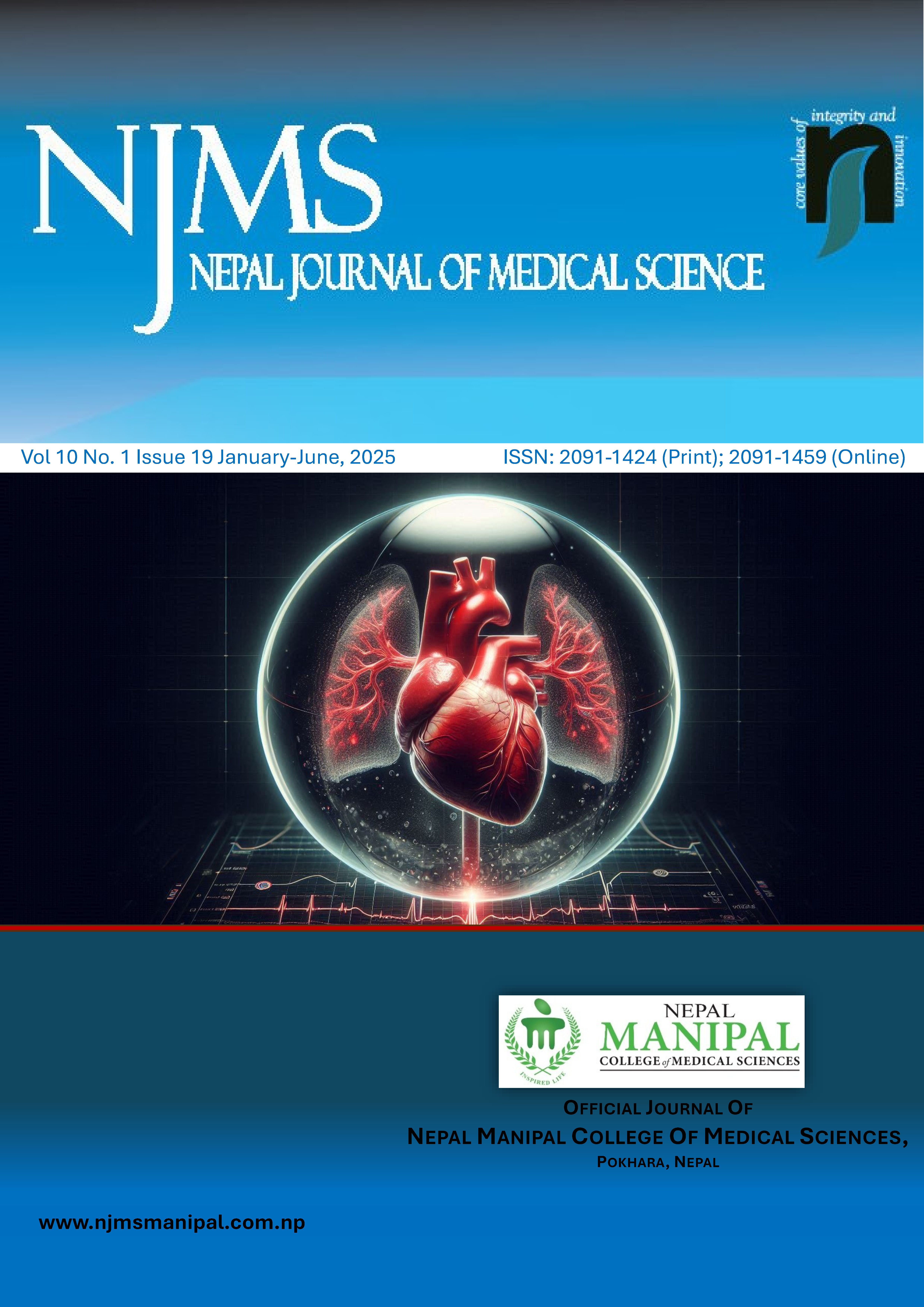A Study on Isolation of Group A Beta Hemolytic Streptococci and its Sensitivity to Co-Amoxiclav in Acute Tonsillitis
Keywords:
Azithromycin; Co-Amoxiclav; Group A beta-hemolytic streptococcus; Sensitivity; Tonsillitis.Abstract
Introduction: Acute tonsillitis, often caused by Group A Beta-Hemolytic Streptococci (GABHS), is a significant global health concern. Co-Amoxiclav is widely used for treatment, but rising antibiotic resistance necessitates evaluation of its efficacy. This study aimed to isolate GABHS and assess its sensitivity to Co-Amoxiclav in patients with acute tonsillitis.
Methods: A hospital-based cross-sectional study was conducted at Manipal Teaching Hospital, Nepal, from November 2023 to January 2025 after obtaining ethical clearance (MCOMS/IRC/574/GA). Throat swabs from 280 clinically diagnosed patients with acute tonsillitis were collected and analyzed for bacterial pathogens. Antimicrobial susceptibility testing was performed, and data were analyzed using SPSS.
Results: Out of 280 clinically diagnosed patients with acute tonsillitis, GABHS was isolated in 12.85% of cases, with 77.77% sensitivity to Co-Amoxiclav. The chi-square test (p-value = 0.80) indicated no significant difference, suggesting Co-Amoxiclav's effectiveness regardless of GABHS presence in bacterial tonsillitis. Azithromycin showed the highest resistance, while vancomycin was the most effective.
Conclusions: GABHS remains a key pathogen in acute tonsillitis, and Co-Amoxiclav is still effective for treatment. However, declining sensitivity underscores the need for judicious antibiotic use and exploration of alternative treatments.
Downloads
Downloads
Published
How to Cite
Issue
Section
License
Copyright (c) 2025 Nepal Journal of Medical Sciences

This work is licensed under a Creative Commons Attribution 4.0 International License.
Copyright © by Nepal Journal of Medical Sciences. The ideas and opinions expressed by authors of articles summarized, quoted, or published in full text in this Journal represents only opinions of authors and do not necessarily reflect the official policy of Nepal Journal of Medical Sciences or the institute with which the author(s) is (are) affiliated, unless so specified.




